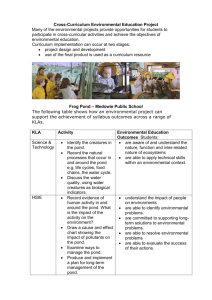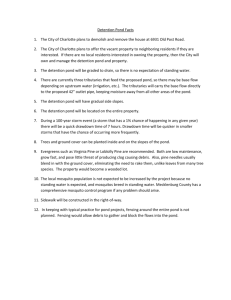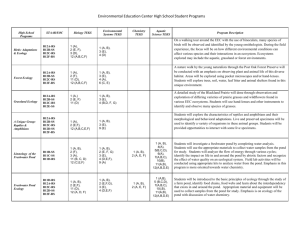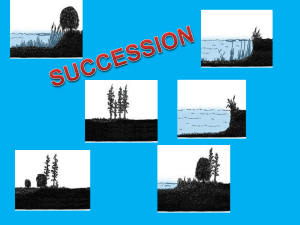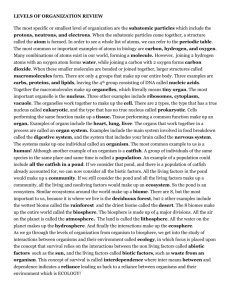wsi_4896_rpt - Ministry of Environment
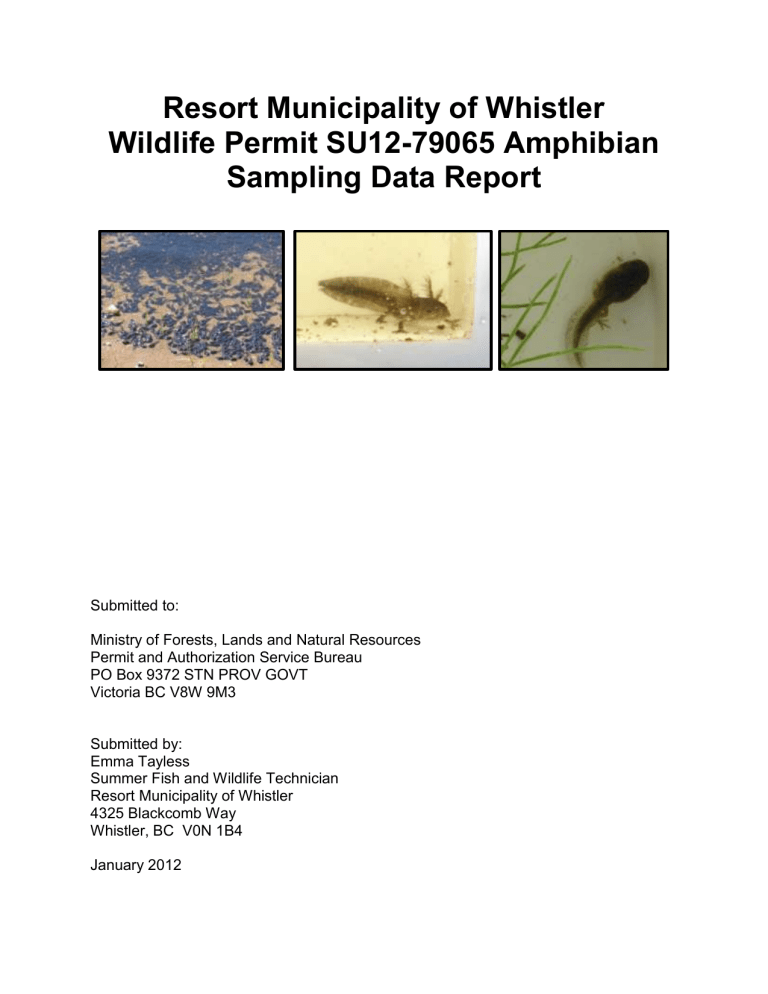
Resort Municipality of Whistler
Wildlife Permit SU12-79065 Amphibian
Sampling Data Report
Submitted to:
Ministry of Forests, Lands and Natural Resources
Permit and Authorization Service Bureau
PO Box 9372 STN PROV GOVT
Victoria BC V8W 9M3
Submitted by:
Emma Tayless
Summer Fish and Wildlife Technician
Resort Municipality of Whistler
4325 Blackcomb Way
Whistler, BC V0N 1B4
January 2012
Resort Municipality of Whistler Wildlife Permit SU12-79065 Amphibian Sampling Data Report
Summary
This report summarizes data collected for amphibian presence surveys in waterways located throughout the Resort Municipality of Whistler (RMOW). As well as information collected for Western Toad Management purposes at Lost Lake Municipal Park. The surveys were conducted by visual observation, dip netting and live trapping through the summer of 2012.
Amphibian species observed in surveyed Whistler waterways in 2012 and their conservation listing are tabled below.
English Name Scientific Name Species
Code
BC
Conservation
Listing
Roughskin newts Taricha granulose A-TAGR
Long-toed Salamanders Ambystoma macrodactylum A-AMMA
A-PSRE Northern Pacific Tree
Frogs
Western Toads
Pseudacris regilla
Anaxyrus boreas A-ANBO
Yellow
Yellow
Yellow
Blue ii
Resort Municipality of Whistler Wildlife Permit SU12-79065 Amphibian Sampling Data Report
Table of Contents
iii
Resort Municipality of Whistler Wildlife Permit SU12-79065 Amphibian Sampling Data Report
1.0 Introduction
In the summer of 2012, the Resort Municipality of Whistler (RMOW) conducted reconnaissance level amphibian surveys for amphibian presence in selected waterways throughout Whistler. These report summaries the survey data collected under Wildlife
Permit SU12-79065.
The surveys were conducted by RMOW summer fish and wildlife technicians. The goal of the reconnaissance level surveys were to document amphibian use of constructed wetland ponds and stormwater ponds as well as document the timing and life stage of the 2012 Western Toad population at Lost Lake Municipal Park.
This information can be used to track amphibian species use of specific waterways over time, as well as to determine what waterways amphibians are using and apply best management practices for amphibians to these areas.
1.1 Objectives
The objective of the 2012 amphibian presence surveys were to document amphibian species use of stormwater and constructed wetland ponds. The objectives of the 2012
Western Toad Surveys at Lost Lake Municipal Park were to:
estimate population numbers at various life stages;
divert juveniles away from high mortality trampling areas; and
survey toad mortalities on roads and trails.
1.2 Study Area
The surveys were conducted within the boundaries of the RMOW. The three main study areas were the Cal-Check parking lot restoration site, Cheakamus Crossing (previously the Whistler Athletes Village) and Lost Lake Municipal Park. Map 1 shows the general survey area locations.
1
Resort Municipality of Whistler Wildlife Permit SU12-79065 Amphibian Sampling Data Report
Map 1. General amphibian study area locations in Whistler for 2012 amphibian surveys are outlined in red and the RMOW boundary in grey. Base map source RMOW 2012.
The Cal-Check constructed wetland ponds (UTM 10U 491790 5545270) were built in
2010 as part of efforts by the Ministry of Highways to restore amphibian habitat in the sea to sky region, after it had been heavily impacted by the re-alignment of Highway 99 and parking lot construction by the Vancouver Organizing Committee (VANOC) for the
2010 Olympics Games.
The ponds were designed to be ephemeral (to dry up for part of the year) and like small water bodies in natural ecosystems, some years will be more productive than others.
The ponds are numbered 1 through 5, from Pond 1 at the south end of the site (lowest elevation) to Pond 5 at the north of the site (highest elevation). Fully wetted the ponds have an approximate surface are of 50 m 2 to 120 m 2 and a maximum depth of 20cm to
100 cm.
The Cheakamus Crossing neighborhood (previously the Whistler Athletes Village) had four ponds surveyed in this area.
1. SP2 Pond (UTM 10U 497010 5547315) is centrally located in the Cheakamus
Crossing neighborhood. Historically this was a naturally wetted area that was converted to a stormwater pond during neighborhood development by Whistler
2020 and post-construction it was converted into a constructed
2
Resort Municipality of Whistler Wildlife Permit SU12-79065 Amphibian Sampling Data Report wetland/stormwater retention area. Fully wetted the pond has an approximate surface are of 1750 m 2 and a maximum depth of 3 m.
2. SP4 Pond (UTM 10U 496760 5547553) is a constructed stormwater pond located between the toe of slope of Bailey Park (previously the old Whistler landfill) and the edge of the gravel pit access road. This pond is fed by surface water and snowmelt run off as well as groundwater. Fully wetted the pond has an approximate surface area of 500 m 2 and a maximum depth of 1.5 m.
3. SP4N Pond (UTM 10U 496767 5547560) is an unintentional shallow pond just north of SP4 that is seasonally wetted by surface water and snow melt. Fully wetted the pond has an approximate surface area of 100 m 2 and a maximum depth of 40 cm.
4. RP1 Pond (UTM 10U 496625 5547952) is a constructed wetland pond located in a previously disturbed landfill area. The pond in approximately 180 m 2 and a maximum depth of 1 m. It is seasonally wetted, usually drying up by August.
Lost Lake (UTM 10U 504530 5552690) (watershed code: 119-467100-97600-17100-
0930) has a surface area of 16.73 ha, maximum depth of 23 m, mean depth of 8 m and is located at 685 m in elevation. The one inlet channel is a side channel to Blackcomb
Creek and enters at the south-west end of the lake near the one lake outlet.
Terrestrial habitat around the lake is composed of mature second growth forest in the
Coastal Western Hemlock biogeoclimatic zone. The Valley Trail system circumnavigates the lake and provides a connector trails to the village that are hard packed and/or paved. The park also features an extensive network of single track mountain biking / hiking trails that weave throughout the park. The park is surrounded by a golf course and residential development from the south and west. A road provides vehicle access to the parking lot and main beach area of the park and to the golf course maintenance area.
2.0 Methods
Waterways were assessed for amphibian presence by a shore based visual survey and live capture / trapping. Shore based visual surveys consisted of walking around the edge of the pond with polarized sunglasses. Species presence and estimated numbers were noted. Live capture consisted of dip netting amphibians from shore or trapping with collapsible minnow traps (placed 2/3 of the way in the water, leaving space for air breathing amphibians) with a 4-8 hour soak time.
All captured amphibians were transferred to a wetted bucket or viewing chamber where they were identified and in some cases measured and photographed. Then released at the site of capture.
3
Resort Municipality of Whistler Wildlife Permit SU12-79065 Amphibian Sampling Data Report
Standard Operating Procedures: Hygiene Protocols for Amphibian field Fieldwork (MOE
2008) were followed to reduce the risk of disease transmission between sites and included:
rinsing gear and equipment of any mud, algae, plants or invertebrates;
bleaching of gear/equipment for a minimum of 15 minutes;
rinsing of bleached gear/equipment; and
sun drying of gear/equipment.
3.0 Results and Discussion
3.1 Cal-Check constructed wetland ponds
The Cal-Check ponds were visited every two weeks from May to August to document water retention rates, amphibian use and in-situ water quality. A distinction was not made between northwestern salamanders, long-toed salamanders and rough skinned newt hatchlings or larvae, as they can be similar in appearance. Although based on habitat type and some appearance characteristics, it is likely the salamanders present in the ponds are long-toed salamanders.
In 2012 northern pacific tree frogs tadpoles were observed in pond 2. Salamander hatchlings/larvae were observed in pond 1, 2 and 3. Pond 4 remained dry all summer and pond 5 did not appear to have any amphibian use. Conditions in the ponds were good for visually estimating species number as the ponds are shallow, clear and free of surface vegetation. Table 1 outlines species and approximate numbers observed and the date the pond was dry by.
Table 1. Cal-Check Constructed wetland ponds water retention, amphibian observations and in-situ water quality.
Water body Date
Est.
Wetted
Surface
Area
(m
2
)
Est. Max
Water
Depth
(cm)
Amphibian Species
Observed
Water
Temp
(°C)
Specific
Cond.
(µS/cm c
)
DO
(%)
DO
(mg/L) pH
Pond 1 2-May-12 113 45 NS NS NS NS
Pond 1 16-May-12 10
Pond 1 29-May-12 3
Pond 1 11-Jun-12
Pond 1 25-Jun-12
Pond 1 9-Jul-12
Pond 1 25-Jul-12
Pond 1 8-Aug-12
3
5
49
4 dry
20
10
8
20
40
15
None
3 adult roughskin newts
NS
22.00
None 14.13
2 newt/salamander hatchlings (24 mm
TL) 17.54
3 newt/salamander larvae (24 mm SVL) 25.54
None
None
29.47
29.37
90
124
96
77
71
103
83.50
87.60
74.80
7.44
8.22
7.13
102.40 8.40
106.70 8.03
103.80 8.70
6.93
7.14
7.04
6.85
7.12
7.45
Pond 2 2-May-12 111
Pond 2 16-May-12 99
Pond 2 29-May-12 96
80
55
50
None
None
None
NS
20.89
15.90
NS
40
39
NS
88.50
82.20
NS
7.90
8.12
NS
7.08
7.21
4
Resort Municipality of Whistler Wildlife Permit SU12-79065 Amphibian Sampling Data Report
Pond 2 11-Jun-12
Pond 2 25-Jun-12
Pond 2 9-Jul-12
Pond 2 25-Jul-12
Pond 2 8-Aug-12
59
93
104
59 dry
30
40
80
30
100 pacific tree frog tadpoles (no legs) 18.64
50 pacific tree frog tadpoles (no legs)
1 newt/salamander larvae (28 mm TL) 24.91
50 pacific tree frog tadpoles (back legs)
2 salamander larvae 28.82
6 newt/salamander larvae (20mm SVL) 29.36
39
42
40
43
90.80
97.80
8.48
8.08
100.40 7.79
100.60 7.69
Pond 3 2-May-12 80
Pond 3 16-May-12 70
Pond 3 29-May-12 56
Pond 3 11-Jun-12
Pond 3 25-Jun-12
Pond 3 9-Jul-12
Pond 3 25-Jul-12
Pond 3 8-Aug-12
40
76
42
12 dry
12
40
50
10
40
30
15
None
NS
None 20.70
None 15.19
3 newt/salamander hatchlings 19.52
8 newt/salamander larvae (20 mm SVL) 24.38
None
29.20
None
28.18
NS
30
29
29
28
39
34
NS
85.50
86.60
NS
7.82
8.70
93.30 8.56
100.50 8.40
87.10 6.44
104.50 8.15
Pond 4 All summer dry
7.02
6.90
7.09
7.36
Pond 5 2-May-12 20
Pond 5 16-May-12 18
Pond 5 29-May-12 18
Pond 5 11-Jun-12 18
Pond 5 25-Jun2-12 20
Pond 5 9-Jul-12 19
Pond 5 25-Jul-12 7
30
25
20
20
20
35
10
None
None
None
None
None
None
None
NS
21.99
15.51
19.05
26.34
31.13
30.46
NS
60
53
43
88
85
87
NS NS
107.30 9.41
92.80
97.30
9.24
9.03
NS
7.04
6.98
6.99
119.90 9.56
115.90 8.56
6.85
7.19
133.60 10.00 7.45
Pond 5 8-Aug-12
NS = not sampled dry
In 2011 Pond 1 and 2 were also used for Western Toad breeding with approximately
500 tadpoles in each pond. The ponds dried before the toad could metamorphose and emerge onto land. No western toad tadpoles were observed in 2012. The presence of tree frog tadpoles at the site is new for 2012. In 2011 newt/salamander hatchlings/larvae were observed in pond 5, and in 2012 this pond was not used. Water retention within the ponds seems to be an area of concern with the ponds drying in July
19 in 2011 and by August 8 in 2012.
3.2 Cheakamus Crossing SP2 Pond
The Cheakamus Crossing SP2 pond was visited three days over the summer of 2012.
Amphibians species observed using the pond included newt/salamander larvae (thought to be Long-toed Salamanders and northern pacific tree frog tadpoles. Table 2 summarizes amphibian observations, estimated number seen and lengths.
5
NS
6.71
6.55
7.17
6.19
7.10
6.96
Resort Municipality of Whistler Wildlife Permit SU12-79065 Amphibian Sampling Data Report
Table 2. SP 2 Pond, Cheakamus Crossing Constructed Stormwater retention/wetland pond amphibian observations.
Water body Date Amphibian Species Observed
Estimated
Number Seen*
Total Length
(mm)
Snout to Vent
Length (mm)
SP 2
SP 2
July 27, 2012
July 27, 2012
Newt/salamander hatchlings 35+
Northern pacific tree frog tadpoles 6
31-46
26-32
19-24
15-25
SP 2 August 14, 2012 Newt/salamander larvae 2 n/a n/a
SP 2 August 15, 2012 Newt/salamander larvae 17 50-70 27-35
Previous to pond construction, western toad tadpoles were observed using the naturally wetted area. Since post pond construction and the development of roads, trails and building around the pond, no western toads have being observed in the area.
The constructed pond was built with steep side with the south facing slope built up to accommodate a trail. This design is not conducive to western toad use. Organics were removed and the pond area is down to mineral soil making it difficult for native vegetation to re-establish. Invasive reed canary grass has established in the fore-bay pond and is spreading.
3.3 Cheakamus Crossing SP4 Pond
Salamander larvae and northern pacific tree frog tadpoles were observed in the SP 4
Pond stormwater pond. The pond remained wetted throughout the year (ice covered in winter). Tables 3 summaries amphibian observations.
Table 3. SP 4 Pond, Cheakamus Crossing stormwater pond amphibian observations.
Water body Date Amphibian Species Observed Number captured
SP 4 August 14, 2012 Newt/salamander larvae 3
SP 4
SP 4
August 14, 2012
August 15, 2012
Northern pacific tree frog tadpoles
Newt/salamander larvae
2
21
SP 4 August 15, 2012 Northern pacific tree frog tadpoles 2
* Due to pond-weed vegetation growth in the pond it is difficult to visibility observe amphibians, thus estimated number seen likely just represents a small portion of the amphibian population in the pond.
Amphibian use of this pond is past years in unknown.
3.4 Cheakamus Crossing SP4N Pond
Salamander larvae and northern pacific tree frog tadpoles were observed using the
SP4N pond. The pond dried up by late August. Table 4 summaries amphibian observations.
6
Resort Municipality of Whistler Wildlife Permit SU12-79065 Amphibian Sampling Data Report
Table 4. SP 4N Pond, Cheakamus Crossing stormwater pond amphibian observations.
Water body Date Amphibian Species Observed Number captured
SP 4N
SP 4N
July 27, 2012
July 27, 2012
Newt/salamander larvae
Northern pacific tree frog tadpoles
1
1
SP 4N August 15, 2012 Newt/salamander larvae 1
Amphibian observations of this pond in 2011 included western toad tadpoles and northern tree frog tadpoles, which are thought to have not survived to metamorphose due to the pond drying by early August.
3.5 Cheakamus Crossing RP1 Pond
Salamander larvae and northern pacific tree frog tadpoles were observed in the pond in
July. By August 14 th the pond was dry and two juvenile salamanders were found under woody debris in the pond.
Table 5. RP 1 Constructed wetland pond, Cheakamus Crossing, Amphibian observations.
Water body Date Amphibian Species Observed Number captured
RP 1
RP 1
July 27, 2012
July 27, 2012
Newt/salamander larvae
Northern pacific tree frog tadpoles
2
1
RP 1 August 14, 2012 Newt/salamander juveniles 2
Amphibian observation in this pond in 2011 included northern tree frog tadpoles.
3.6 Lost Lake Western Toad Population
The western toad population at Lost Lake varies from year to year as does the time it takes for the tadpoles to develop and become land based. 2012 produced the highest recorded (records from the last 5 years) estimate of tadpoles seen.
Peak adult toad breeding activity was observed in the Lost Lake southern wetland from
May 6 th to May 8 th . An estimated 50 adult toads were in the area. Tadpoles were first seen grouping at the southern beach area on May 23, and at its peak the tadpole population was estimated at 45,000. Juvenile toads started emerging form the lake on
July 28 th and took cover in the wetland grasses before they started to migrate to the forest from August 2 nd to 28 th . It is estimated 17,500 juvenile toads emerged from the lake.
ACO wildlife fencing was used to guide migrating juvenile toads from the wetland to the riparian area of Blackcomb Creek, away from the main beach, lawns and park access trail. The juvenile toads still had to cross one trail and a park access road (for the ones that choice to travel south-east). In the morning before the park got busy juvenile toads were collected on roads and trails and immediately released in their direction of travel
7
Resort Municipality of Whistler Wildlife Permit SU12-79065 Amphibian Sampling Data Report on the far side of the road or trail they were crossing (this was a small portion of the toads that ended up on the trail and road).
Juvenile toad mortalities were collected from the trails and the access road once a day
(usually in the morning). The dead toads only represent a small fraction that were killed while migrating to the forest as there small bodies disintegrate quickly upon being killed on the asphalt road and trail.
Between August 2 to August 28, 2012 road and trail surveys collected 806 dead juvenile toads that were crushed by people, bikes and vehicles. From August 9 th to 28 th road and trail surveys collected 814 live juvenile toads and moved then to the far side of the trail or road they were on in their direction of travel.
Mitigation measures to try and decrease toad mortality included a trail closure, signage, volunteer toad monitors and a new paper article to raise public awareness about the migration.
Below are photos from variety of life stages of the 2012 western toad population at Lost Lake.
Western toad tadpoles grouping in the shallows of Lost Lake, July 5, 2012
Juvenile western toads piling together on the shore of
Lost Lake, August 17, 2012
Crow eating newly emerged western toads on the shore of Lost Lake, August 8, 2012.
Photo Liz Barret.
Juvenile western toads crossing trail in trail closure area. August 8, 2012.
8
Resort Municipality of Whistler Wildlife Permit SU12-79065 Amphibian Sampling Data Report
Western toad mortality from a vehicle, Lost Lake
Road, August 14, 2012.
4.0 General Discussion
Amphibians are using constructed stormwater ponds as habitat areas but urbanization and pond design may only provide habitat for certain species. Constructed wetlands are being used by amphibian species but water retention rates (i.e. ponds drying) remains a concern.
Urbanization and habitat alteration and loss in and around wetted areas appears to be the greatest threat to Whistler’s amphibians.
5.0 Recommendations
Follow up recommendations to this reconnaissance level amphibian survey data include:
mapping known locations of amphibian use in Whistler (including observational data that has being collected from past years and various reports);
distribute amphibian maps to the parks, roads and planning department along with a summarized version of Best Management Practices for Amphibians and
Reptiles in Urban and Rural Environments in British Columbia (MWLAP 2004);
reconnaissance level monitoring of stormwater and constructed wetland ponds in
2013 to see if there is any change in species that use the ponds; and
applying adaptive management techniques to the western toad population at Lost
Lake, including but not limited to improved signage, alteration of diversion fence to follow natural migration route and construction of a trail underpasses.
9
Resort Municipality of Whistler Wildlife Permit SU12-79065 Amphibian Sampling Data Report
6.0 References
Ministry of Environment (MOE). 2008. Standard Operating Procedures: Hygiene
Protocols for Amphibian Field Work.
Ecosystems Branch.
Ministry of Water, Land and Air Protection (MWLAP). 2004. Best Management Practices for Amphibians and Reptiles in Urban and Rural Environments in British Columbia.
Resort Municipality of Whistler (RMOW). 2012. RMOW External GIS. Accessed
February 1, 2012. Web address: http://maps.whistler.ca/WhistlerMap/Default.aspx
10

